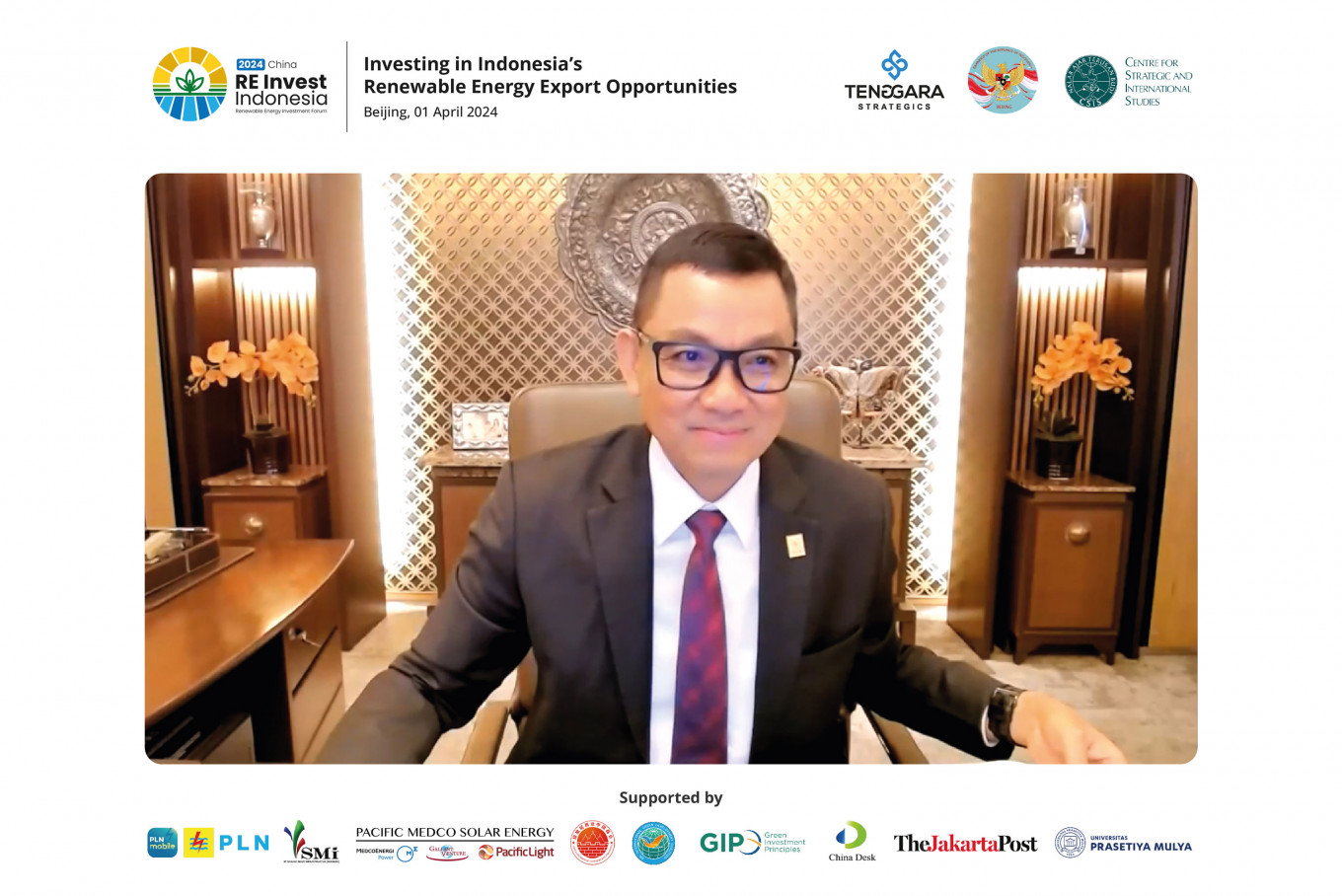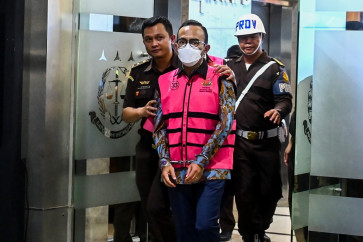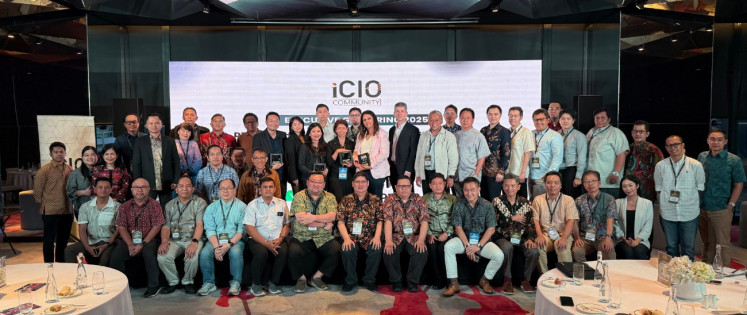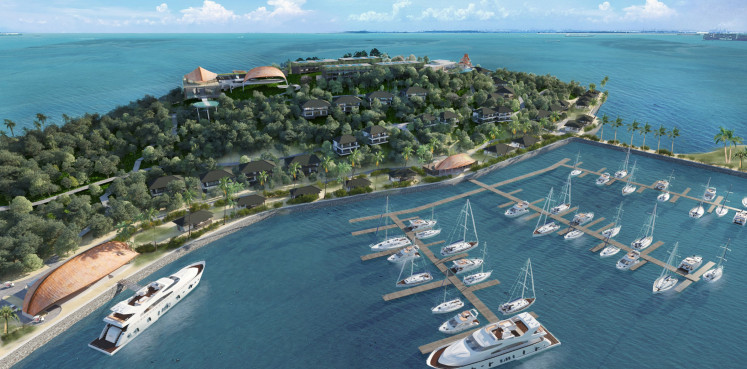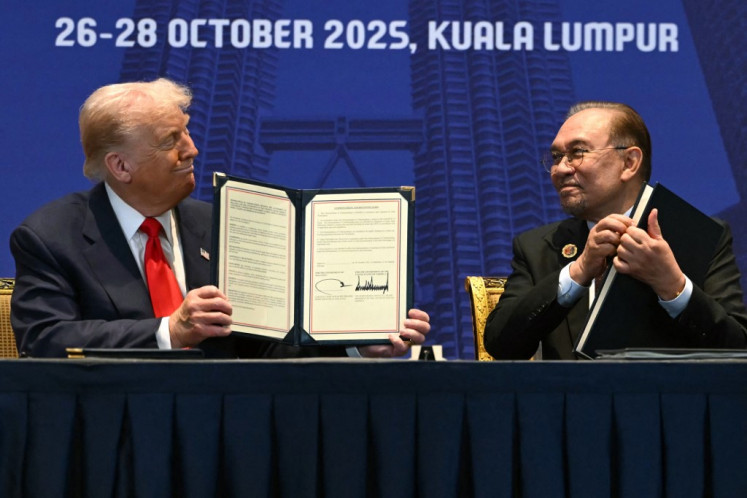Popular Reads
Top Results
Can't find what you're looking for?
View all search resultsPopular Reads
Top Results
Can't find what you're looking for?
View all search resultsPLN introduces green super grid at Beijing renewable investment forum
Change text size
Gift Premium Articles
to Anyone
P
LN has reiterated its commitment to achieving net-zero emission by 2060 at a forum of Chinese investors by showcasing its green energy-enabling transmission line, also known as the green super grid.
As Darmawan Prasodjo, CEO of the state-owned electricity company, revealed in his remote presentation on April 1 at the third China RE Invest Indonesia in Beijing, the green super grid is PLN's solution to solving the geographical mismatch between supply and demand for Indonesia's renewable energy.
Demand for renewable energy tends to be centralized in highly populated, urban regions, while renewable energy sources tend to be located in remote or relatively isolated regions.
In an illustrated example, PLN has identified significant renewable energy potential along the border between West and Central Kalimantan, especially for hydropower. Meanwhile, demand for renewable energy in Kalimantan is concentrated around Samarinda and Balikpapan, which are located on the opposite end of the region along the East Kalimantan coast.
This mismatch between supply and demand is a pervasive challenge that continues to stifle the commercial viability of renewable energy in Indonesia. The green super grid would solve this issue by creating transmission lines across the country, even connecting major islands separated by sea.
According to PLN’s projection, its green super grid would connect consumers and suppliers and introduce around 19.6 gigawatts (GW) of hydro energy, 7.1 GW of geothermal energy, 3.7 GW of bioenergy, 16.5 GW of solar energy, 11.3 GW of wind energy and 2.4 GW of new energy sources to the national energy mix by 2040.
The green super grid is also a part of PLN’s accelerated renewable energy development (ARED) plan, and aims to accommodate Indonesia’s renewable energy exports under its current plan to extend the green super grid to Singapore and Kuala Lumpur.
In the future, PLN’s green super grid is expected to be a major contributor to the realization of the ASEAN Power Grid, an ambitious goal to develop a shared power grid for the transmission of electricity among all ASEAN member states.
The green super grid is also expected to solve another challenge in renewable energy implementation in Indonesia, namely the instability of variable renewable energy (VRE) or intermittent renewable energy sources (IRES), such as solar and wind.
The green super grid is to be integrated end-to-end with a smart grid that accommodates the complex needs of VRE. Some of the features currently being developed for the smart grid include accurate weather prediction, a smart dispatch system and a smart defense scheme.
VRE generation can still be developed in Indonesia even without a smart grid, but that development is expected to stall at a maximum electricity generation capacity of 5 GW due to the inherent instability of VRE. Meanwhile, smart grids would allow for the development of VRE generation at a rate comparable to controllable renewable energy sources toward a total generation capacity of 28 GW by 2040.
Considering the renewable power generation capacity that PLN’s ARED plan will enable, it also includes extensive technological and infrastructure developments. To cover these necessary innovations and supporting facilities, PLN estimates a capital requirement of around US$150 billion to fully realize the ARED, including the green super grid and smart grid.
Darmawan also said the ARED plan included a revised version of PLN’s 2021-2030 electricity procurement plan (RUPTL), which originally targeted a renewable capacity of roughly 52 percent of the national energy mix by 2030. The additional projects included in the ARED support increasing the targeted renewable energy share to 75 percent.
PLN believes that completing the green super grid would serve as a gateway to more investment opportunities in renewable energy, and not just in Indonesia, but also other ASEAN states through regional exports and transmissions.
Climate change is a global issue that demands international cooperation to overcome.
With that in mind, Darmawan emphasized that the ARED plan reflected PLN’s spirit of collaboration and overarching goal of mutual prosperity. He expressed his belief that China, which is home to many of the world’s top renewable energy investors, would be inclined to participate in this ambitious endeavor.
In closing his presentation, Darmawan stated that beyond accelerating economic interests and establishing deeper international cooperation, PLN truly believed that protecting the environment was part of its responsibility in safeguarding the future for all. Electricity generation was not the company’s primary goal, he said, rather, it was a by-product of fulfilling its responsibilities.
This article is written in a partnership with Tenggara Strategics.

